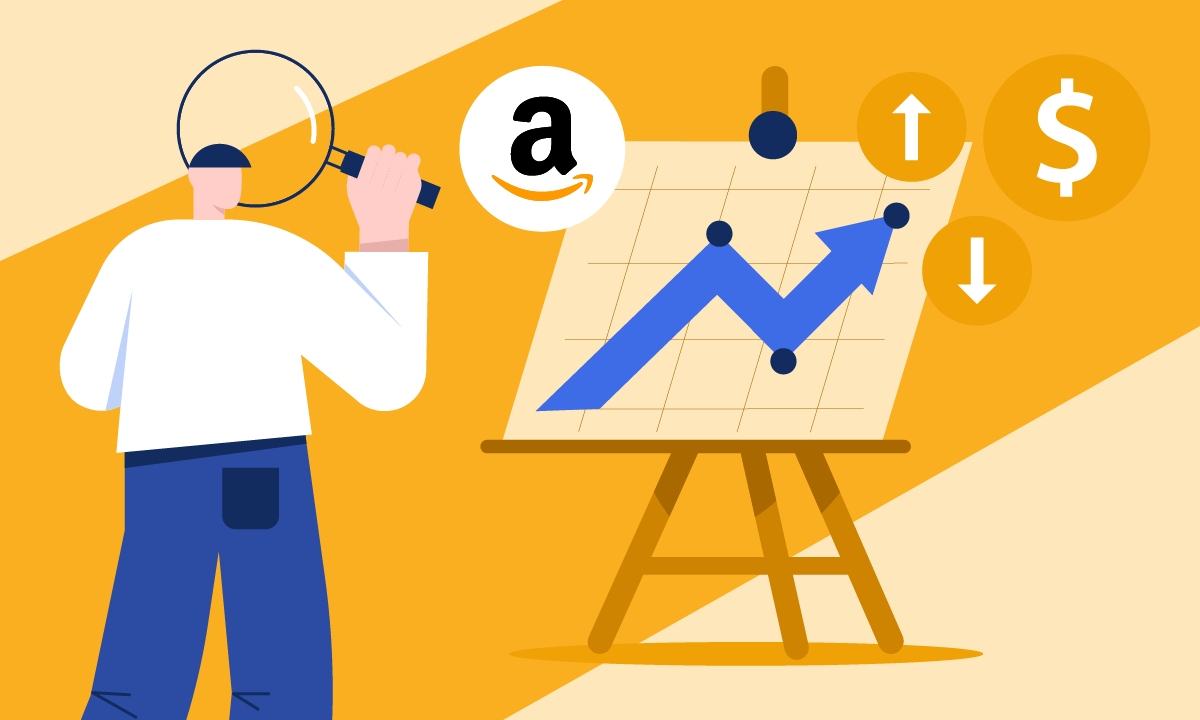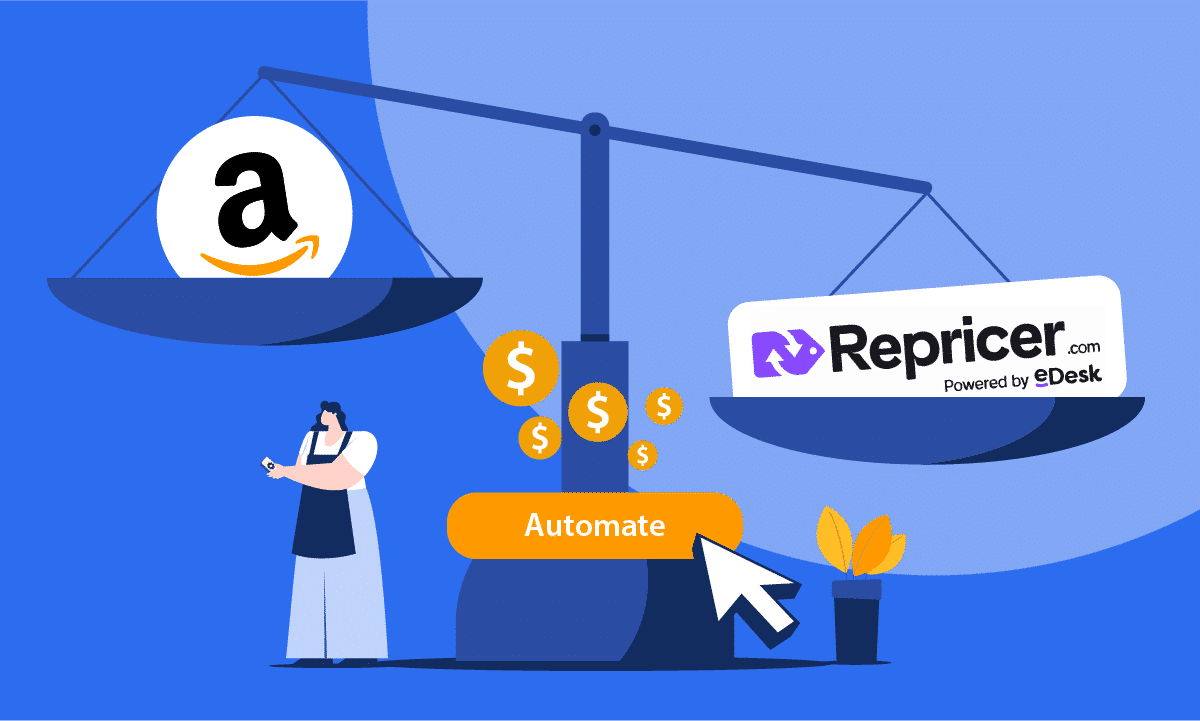As an Amazon seller, peak seasons offer exciting opportunities to increase sales and revenue. Holidays like Mother’s Day, Black Friday, and Christmas bring millions of eager shoppers to the platform, but with that opportunity comes fierce competition. Seasonal periods not only bring more buyers but also more aggressive tactics from competitors, who may adjust prices, ramp up advertising, or drop prices below margins to capture market share.
In 2023 alone, Amazon saw a revenue boost of nearly $2 billion, driven by major shopping events like Black Friday and Cyber Monday, which resulted in over 1 billion products sold.
To capitalise on these high-demand periods, you need more than just great products – you need a smart, adaptable pricing strategy to stay ahead of the competition and maximise your sales potential.
Understanding Seasonal Sales on Amazon
As an Amazon seller, understanding seasonal trends is key to maximising sales.
Peak periods, like holidays and events such as Prime Day, Black Friday, and Cyber Monday, bring millions of shoppers to the platform, allowing sellers to increase revenue.
The holiday season, which runs from November to December, is the biggest sales window, while Prime Day in July offers another major chance to capitalise on discounts and high traffic.
Key seasonal events to consider when planning your strategy include:
- Valentine’s Day
- Easter
- Mother’s Day
- Father’s Day
- Back-to-School Season
- Halloween
- Black Friday
- Cyber Monday
- Christmas
Now, let’s dive into seven key strategies that Amazon sellers can use to make the most of these peak seasons and drive revenue growth.
Strategy #1: Securing the Buy Box
Did you know that over 80% of Amazon sales come from the Buy Box? That’s why holding the Buy Box is essential – without it, even the best pricing strategies won’t make much of a difference, because most of your sales will slip through your fingers.
What’s the first step if you don’t have the Buy Box?
A key strategy during peak seasons is to lower your prices just enough to stay competitive while maintaining profitability. In some cases, sellers may consider dropping prices below profitability to gain market share, but that can be risky.
A smarter approach is to set up automated price reduction rules that adjust based on your competitors (FBA, FBM, SFP, or Amazon) and your desired profit margins.
Using a tool like Repricer, you can enter your costs for each product and set a minimum profit margin. Repricer will handle the rest, dynamically adjusting your prices and helping you compete more effectively – especially against FBA sellers, who are more likely to win the Buy Box. This way, you’ll be in a stronger position to capture those peak season sales without risking your margins.
Strategy #2: Keeping a Firm Grip on the Buy Box
Winning the Buy Box is one thing, but holding onto it during busy seasons is the real challenge. Success relies on balancing competitive pricing with strong seller metrics. As competitors lower their prices and sales volumes increase, both areas can come under strain.
If you’re an FBA seller, Amazon takes on much of the operational load, but that doesn’t mean you can sit back and relax. Customer support is just as critical, especially during peak periods. A single negative review in the holiday rush can affect your ratings, making it tougher to keep the Buy Box – no matter how good your prices are.
Another part of holding the Buy Box is increasing profits while maintaining your position. This means slowly adjusting your prices to boost margins without losing the Buy Box. Doing this manually is tough at the best of times, but during peak seasons, it’s nearly impossible without some automation. Tools like Repricer can help by dynamically adjusting your prices based on real-time competition, allowing you to stay competitive and profitable.
Strategy #3: Managing Your Stock Levels
Amazon’s A9 algorithm takes your stock history into account when deciding Buy Box eligibility, so frequently running out of stock can hurt your chances of winning it back in the future. During peak periods, stockouts are more likely, and if you’re not prepared, it can cost you.
In some cases, you might need to temporarily raise your prices when stock levels are running low to slow down sales while you scramble to restock. While this can be a risky move and isn’t always recommended, it can help when unexpected sales spikes – like a product getting media attention – catch you off guard.
That said, for predictable seasonal peaks, the best strategy is to plan ahead. Make sure you’re well-stocked before the holiday rush to avoid having to make sudden price adjustments and miss out on potential sales.
Strategy #4: Drive Sales with Deals and Coupons
Offering deals and coupons is one of the most effective psychological pricing tactics on Amazon. It can lead to 67% more impulse buys, as Amazon’s design prominently highlights deals, coupons, and the original price to show customers they’re getting a bargain.
This tactic becomes even more powerful during the holiday season, when shoppers are actively hunting for deals and expect to see lowered prices. By tapping into this deal-hunting mindset, you can make your products stand out and drive more sales.
Strategy #5: Offer bonuses
A Capital One Shopping study found that consumers are willing to spend 73% more on a product marketed as a “bonus pack” rather than a discount – even when the total quantity is the same. The reason? Shoppers love the feeling of getting “more for their money.”
In fact, a 2012 report by the American Marketing Association, published in the Journal of Marketing, explored why shoppers prefer bonus packs over discounts. The takeaway? As Amazon sellers, we don’t need to know exactly why this works – just that it does.
Even though Amazon restricts the use of terms like “bonus” or “free” in titles and images, you can still showcase the added value by being strategic with your listings.
Here’s how:
- Optimise your product titles to clearly display the number of items or value buyers are receiving.
- Use images that highlight the quantity customers get, while staying within Amazon’s image guidelines.
This strategy works particularly well for multi-item products, where highlighting the bonus can make all the difference in the buyer’s decision-making process.
Strategy #6: Prepare for Postseason Markdown Pricing
If you sell highly seasonal products, having a postseason markdown strategy is essential for clearing out unsold stock. Unlike temporary discounts, markdowns are permanent price reductions aimed at moving inventory that didn’t sell during the peak season.
To create a successful markdown strategy, you’ll need precise forecasting based on past sales data. As you price your products during the busy season, factor in the potential cost of unsold items sitting in your warehouse or, in the worst case, items you may need to completely offload.
If you’re left with excess stock after the season, reduce prices to clear out remaining items and cut your losses. And remember, if you price a product lower than it has been in the past 30 days, Amazon will apply a “Lowest Price in 30 Days” label to the listing – giving shoppers an extra nudge with built-in pricing psychology.
Strategy #7: Intelligent Dynamic Pricing
Managing all the pricing variables during high sales periods is nearly impossible without the right tools. Without a comprehensive repricing tool, you could miss out on valuable sales because your prices aren’t adapting fast enough to the constantly shifting market.
A great dynamic pricing tool should have several key features to keep you competitive:
- Proactive pricing: Just because your competitors aren’t adjusting their prices doesn’t mean you shouldn’t! Sometimes, making the first move can help you boost profits when the market is quiet.
- Out-of-bounds competitors: Not all competitors are worth fighting with. Some may price too high or too low for you to engage. Your dynamic pricing tool should allow you to define which competitors are outside your range to avoid unnecessary battles.
- Price war safeguards: Price wars can spiral out of control and harm your brand. Features like Repricer’s Price Reset and Sleep Mode help prevent this by resetting prices to a maximum level, ensuring you’re not dragged into a race to the bottom. If a price war restarts, you’ll begin at a higher price point, maximising your profits before making further adjustments.
- No Buy Box options: Occasionally, Amazon removes the Buy Box, which means shoppers will have to click “See all buying options.” In these cases, your pricing tool should give you the flexibility to decide whether to lower prices or hold steady.
Dynamic pricing is all about staying flexible, adapting quickly, and making the most of every sales opportunity – without letting your competitors dictate your next move.
Summary of a peak sales strategy for Amazon sellers
Seasonal pricing requires a mix of both manual planning and automated tools to truly succeed. Here’s a quick recap to help you stay on track:
- For highly seasonal products, calculate the costs of any stock that might not sell and plan accordingly.
- Make sure you’re well-stocked for the expected surge in sales.
- Input your product costs into Repricer, and set the minimum margin you’d like to maintain, whether as a percentage or a fixed amount.
- If your products are eligible, set up Deals and Lightning Deals for each one.
- Consider offering bonus packs and adjust your product images and titles to highlight added value.
- Use Repricer’s dashboard to keep a close eye on which products are performing best, how close you are to winning the Buy Box, and who your top competitors are. Adjust your rules based on real-time data to maximise your dynamic pricing strategy.
Want to stay ahead of the competition and make the most of peak seasons? Speak with our team at Repricer today to explore how our dynamic pricing tools can boost your sales and help you stay in control. Sign up for a free trial on our website or get in touch to learn more.
FAQs
1. How do you increase sales in peak season?
To increase sales during peak season, focus on optimising your pricing strategy, securing the Buy Box, and leveraging deals or coupons to attract shoppers. Offering bonus packs and ensuring your stock levels can meet demand are also key. Using a dynamic pricing tool like Repricer ensures you remain competitive in real-time.
2. What is the peak season for Amazon?
Amazon’s peak season typically runs from October to January, coinciding with major holidays like Thanksgiving and Christmas. This period also includes big promotion events such as Black Friday, Cyber Monday, and Super Saturday.
3. How do I increase my Amazon sales fast?
To quickly boost your Amazon sales, focus on improving your Buy Box eligibility, optimising your product listings with high-demand keywords, and running targeted promotions or deals. Using automated tools like Repricer can also help you adjust prices dynamically to stay competitive.
4. What is the best strategy for maximising sales on Amazon?
The best strategy to maximise sales is to expand your reach. This involves targeting more keywords to show up in more search results. Adding new keywords to existing campaigns or starting fresh ones can dramatically increase your visibility, bringing in more potential customers.




